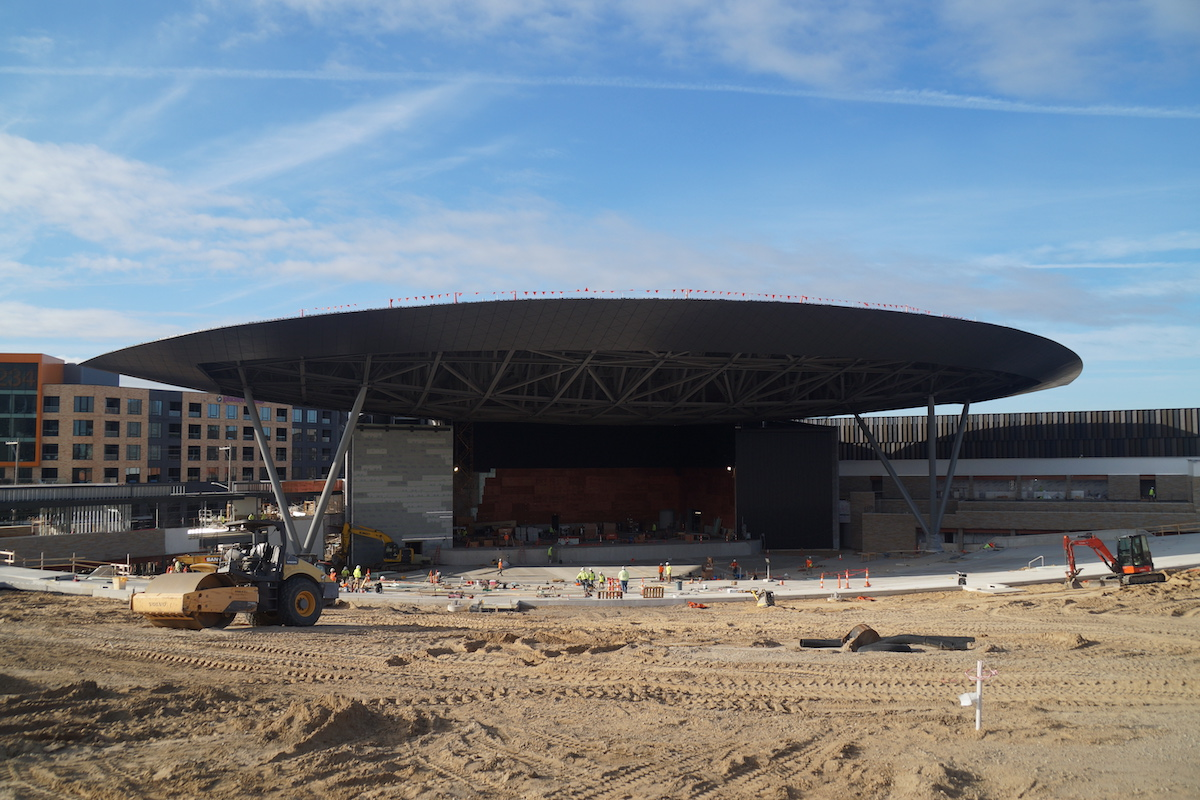The project includes nearly 3 miles of roadway. Part of that is the mile-long Wilmington viaduct, an elevated roadway that goes through the city. Buckalew called the repair of the viaduct the main gist of the project. “The viaduct portion was in bad shape. It offered drivers a poor ride and a high accident rate due to poor merge conditions.”
Nineteen bridges, including the viaduct bridges and the Brandywine River Bridge, are also being repaired as part of the project. Bridge rehabilitation involves deck repairs and replacement, spall repairs, sealing of the substructure and superstructure, barrier replacement, and painting of the steel girders. The repairs are expected to extend the bridges’ service life and avoid major and costly rehabilitation work for a minimum of 30 years.
The Brandywine River Bridge is a significant element of the work – 20 percent according to Buckalew. The team is adding a lane on the northbound side, which sees significant traffic.
The team demoed existing decks with high-pressure water. It took off 1.5 to 2 inches of deck. Besides being a quick way to remove bridge decks, “weak concrete comes out and we can see weak areas that need more attention,” says Buckalew.

| Your local Trimble Construction Division dealer |
|---|
| SITECH Michigan |
Other project elements included resurfacing and repairing the roadway, replacing deteriorating concrete traffic barriers and roadway expansion joints, and improvements to lighting and signage.
They utilized the CM/GC project delivery method, which puts a significant amount of the burden on the contractor. It also gives the general contractor more input as they come on board to finalize the last 10 to 20 percent of the plans and find ways to improve constructability. DelDOT chose this method because it provided the ability to work out constructability issues, slightly alter designs to provide greater efficiency for construction activities, and provided flexibility to alter details for a more cost effective design.
“Kiewit was very innovative and developed an aggressive schedule,” Buckalew says. It meant a great deal of coordination of people and equipment.
The plan was to put the northbound and southbound traffic in a contraflow pattern to free up one direction at a time. It took two weeks to shift traffic to the southbound after they worked on the northbound section first. This meant a drop in lane capacity, a challenge for a highway with an average daily traffic count of 100,000 vehicles, 10 percent of which is truck traffic.
DelDOT did a couple of things to prepare for the massive traffic adjustment. Before starting, the team rehabbed pavement on bypass roadways that the traffic could take so they could handle extensive loads. They also performed extensive outreach to inform the public of alternate routes.
Concern about the impact on the local public has continued through construction. This is particularly relevant since people live along the road. The team adjusted the schedule whenever possible to mitigate noise and is particularly careful about nighttime noise. They also kept everything wet to minimize the dust blown into communities. “We made sure to tell the public what’s coming and include them in key decisions about how we built this job,” Buckalew says.
The team began making the necessary shifts during the third week of February 2021 to be ready to work when the weather broke. This first step was essential to meeting the aggressive schedule.
Buckalew and the team chose the night of February 26, 2021, to complete the traffic shift. This meant shutting down a section of I-95, a major inconvenience for users. The weather forecast that night called for snow at 3 a.m. Buckalew felt confident the team could complete the work before the snow hit. If not, the project wouldn’t complete on schedule.
Throughout the day, the weather forecast changed with the forecast for the arrival of snow getting earlier and earlier. The last prediction called for snow to arrive at 10 p.m. The team managed to complete the work that night even as the snow began to fall.
By March 1, they were working on the northbound side.
However, the challenges were not over. To reach the aggressive schedule, the team had to complete the northbound side and shift traffic to that side by two weeks before Christmas in 2021. The plan was to get everything shifted over during the winter of 2021 in order to do demo work through the winter and be ready to work on the southbound side by spring.
The team managed to get the work done and keep the project on schedule. All lanes were opened to traffic on both sides of I-95 by November 2022. Buckalew credits the entire team, “The women and men who worked on the project came to work, were dedicated, and put in their best efforts to make it happen.”
With the project complete, drivers will enjoy a smoother and safer ride on a key route that serves Wilmington and beyond. The project will expand the lifecycle of the bridges, including the Brandywine River Bridge, for 30 more years.









































































